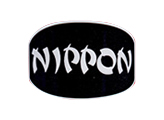Protect trees in winter for summer success
Autumn and winter is the ideal time to prepare the ground for the new season and complete all essential pruning in readiness for the warmer months.
However, whilst trees and bushes are dormant, aphids and other insects are protecting themselves against the cold by nestling deep in the crevices of trees, laying eggs and waiting for spring to arrive before wreaking havoc.
Stunted growth, distorted leaves and the growth of black sooty moulds due to the sticky liquid some pests leave behind, are quite common. However, caterpillars can tunnel into new buds and destroy them, or eat holes in leaves, blossom and developing fruitlets which can cause extensive damage to fruit trees and significantly affect crop yields.
Protecting trees throughout the winter and into spring is simple and essential. Investing in a Winter Tree Wash and Tree Bands or Fruit Tree Grease will not only ensure trees and bushes remain in tip-top condition, but also minimises the risk of disease and infestation during the growing season.
Bug patrol
During winter, trees and bushes become the home to many aphids, spider mites, scale insects and winter moths all looking for somewhere to wait out the winter or lay eggs.
Not always easy to spot, if a tree has an infestation of overwintering bugs you may notice a sticky residue which makes the branches look shiny and wet and encourage the growth of black sooty moulds. Aphids in particular can also cause infestations that multiply quickly come spring.
Female aphids lay eggs that overwinter and hatch as the weather gets warmer. These young aphids can produce their own eggs in a couple of weeks and so the cycle begins again making it difficult to control.
Woolly aphids are also quite common. Woolly and white in appearance, they colonise in the cracks of trees and feed on the sap. As we start to prune, this is the ideal time for woolly aphids to attach to the new growth causing swelling which can split open and enable infection to set in. Using a winter wash will help remove the majority of these bugs, giving your trees the best chance to remain bug-free.
However, it’s not just bugs that can cause early season problems. Whilst some moths hibernate there are those that are active during winter. These moths lay eggs ready for spring hatching where the larvae and caterpillars feed on new leaves.
By removing the eggs, you will be able to prevent uncontrollable infestations come the new season and protect crops.
Wash away those bugs
Historically, gardeners would use an aggressive winter tar oil to coat tree bark and branches in the dormant season, but organic based alternatives, such as Vitax Winter Tree Wash, are just as effective.
A blend of natural plant and fish oils, Winter Tree Wash helps to control pests and protects against disease through the physical application of the wash. Formulated to remove insect debris, dust, dirt and waxy deposits that insects attach their eggs to, it is easy to apply.
Simply dilute the Winter Tree Wash concentrate and apply through a sprayer. The whole of the tree will need to be treated, so make sure you have a ladder handy and additional help to reach the higher areas.
Pay particular attention to crooks in branches, trunks or stems. As it is applied as a fine spray, try and apply on a calm, dry day to prevent drift. Winter Tree Wash can be applied between November and February, prior to buds beginning to break and is ideal for most fruit trees, bushes and ornamentals. However, be careful to ensure all the leaves have fallen before application as it can scorch leaves.
Physical barriers of protection
Whilst Winter Tree Wash is highly effective, for added protection apply a Fruit Tree Grease or Tree Bands to stop crawling insects in their tracks.
If trees are prone to pests such as the Mottled Umber Moth or March Moth, then the application of grease or a tree band will also help monitor the scale of potential infestation. If you do find you have an infestation, check other bushes and smaller trees in the garden for insects too.
Apply the Fruit Tree Grease with a brush, approximately 45cm above ground level, or if using tree bands secure a little higher to prevent bridging.
Depending on the weather, the grease may need to be re-applied throughout the winter as well as any damaged tree bands which will need to be replaced.
Investing time in protecting trees and bushes once leaf fall has taken place will minimise the need for pest protection early in the growing season and help produce healthy crops.
Your login details have been used by another user or machine. Login details can only be used once at any one time so you have therefore automatically been logged out. Please contact your sites administrator if you believe this other user or machine has unauthorised access.












